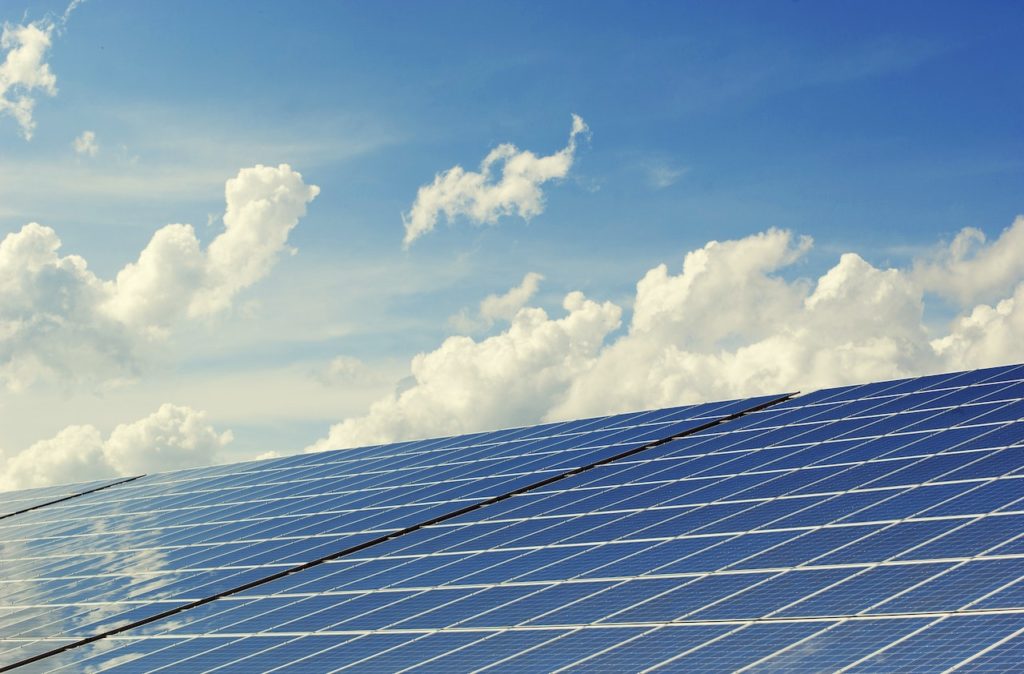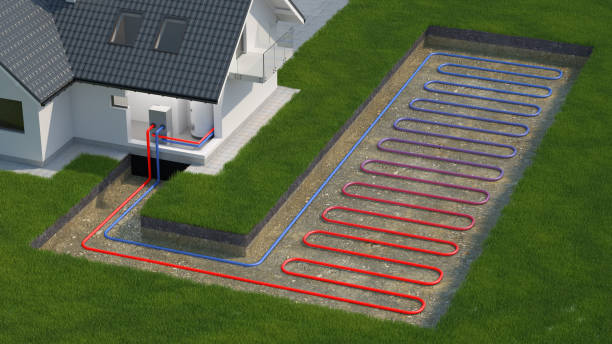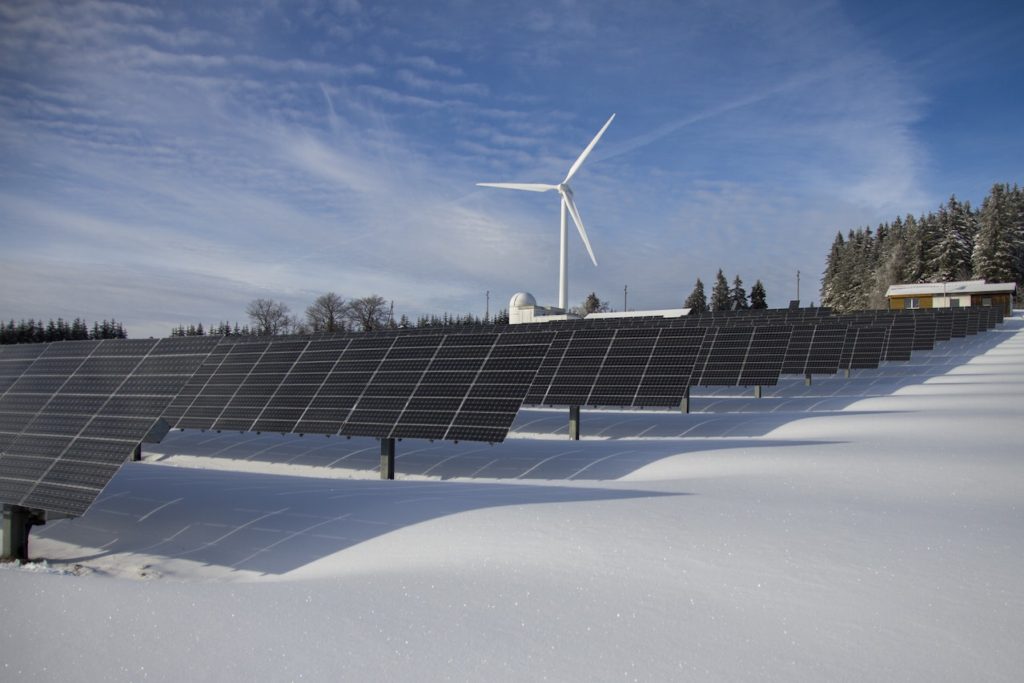Renewable energy have gained immense importance in recent years as the world recognizes the need for sustainable alternatives to traditional fossil fuels. The reliance on non-renewable resources has led to environmental degradation and the acceleration of climate change.
What is Renewable Energy?

Renewable energy consists of energy derived from natural resources that can be replenished within a few decades without exhausting the resources of the planet.
In some form or another, these resources are readily available almost everywhere, and they include wind, sunlight, waves, tides, rain, biomass, and thermal energy stored in the crust of the earth.
Hydrogen is included in this list when it is created from renewable electricity – this is referred to as green hydrogen or renewable hydrogen. Green energy are inexhaustible as well. In addition, they do little to no damage to the environment or the climate.
On the other hand, fossil fuels, like coal, oil, and natural gas, are finite resources. As a result, the natural resources we use in our daily lives do not replenish as quickly as they are produced through natural processes.
The extraction and production of fossil fuels are associated with climate-damaging greenhouse gases as well as health-endangering particles, which makes them inevitable to run out sooner or later.
Why is Energy Efficiency Important?
In addition to adopting renewable energy, improving energy efficiency is crucial for achieving sustainability. Energy efficiency measures aim to minimize energy waste and optimize energy consumption, ultimately reducing the overall energy demand.
By implementing energy-efficient technologies and practices in buildings, transportation, and industry, we can maximize the benefits of geothermal energy and achieve greater energy savings.
The Importance of Renewable Energy to the Environment
Renewable energy plays a vital role in combating climate change, reducing greenhouse gas emissions, and ensuring a sustainable future. By transitioning from fossil fuels to renewable sources, we can significantly decrease our carbon footprint and preserve our planet for future generations.
Geothermal energy offers numerous advantages that make it a compelling choice for a sustainable global energy landscape. Here are some key benefits:
1. Reduced carbon emissions
When compared to fossils, green energy makes little or zero greenhouse gas emissions in the course of their operation, minimizing the contribution to climate change.
2. Energy security
Dependence on fossil fuel imports can be reduced through the use of renewable energy, which are typically domestically available and abundant.
3. Job creation
The companies involved with clean energy provides significant employment opportunities, stimulating economic growth and contributing to a greener economy.
4. Diversification of energy sources
Relying on a mix of geothermal energy reduces vulnerability to price fluctuations and supply interference associated with fossil fuels.
5. Better quality of air
By replacing fossil fuels with cleaner alternatives, sustainable energy helps to reduce air pollution and its adverse effects on public health.
6. Sustainable development
Investing in renewable energy promotes sustainable development by meeting the energy needs of the present without compromising the ability of future generations to meet their own needs.
Types of Renewable Energy
There are several types of renewable energy, each harnessing a different aspect of nature to generate power. Some of the most prominent ones include:
1. Solar

Solar power is obtained by converting sunlight into electricity using solar panels or through concentrated solar power (CSP) systems. It is an abundant form of energy and can be used even in cloudy or rainy conditions. Earth intercepts solar energy ten thousand times the rate humans consume energy.
In addition to providing electricity, cooling, natural lighting, heating, and fuels, solar technologies can also be used to generate electricity and fuels. During the past decade, solar panels have become less expensive, making them a popular means of generating electricity.
Depending on the material type used during the manufacturing process, solar panels have a lifespan of about 30 years.
2. Wind

Wind power involves harnessing the wind’s kinetic energy to generate electricity. Wind turbines are used to capture the wind’s energy and convert it into usable power.
The world’s technical capacity for wind power is more than the world electricity production; there is ample opportunity to deploy significant amounts of wind energy throughout most of the planet.
While there are strong winds in most areas, some of the best wind power generator locations are located in remote areas. There is a great deal of potential in wind power that is offshore.
3. Hydroelectric

Hydroelectric power is generated by utilizing the energy of flowing or falling water. It involves the construction of dams to create reservoirs and the use of turbines to convert the water’s kinetic energy into electricity.
As far as renewable sources of energy goes, hydropower is the most common. As a result, it is in danger of being adversely affected by droughts or ecosystem changes caused by climate change that have an impact on rainfall patterns.
Hydropower infrastructure can adversely affect ecosystems as well. In addition to being more environmentally friendly, smaller hydro is particularly best for remote communities.
4. Geothermal

Geothermal energy harnesses the heat generated by the Earth’s core. It involves extracting hot water or steam from underground reservoirs to generate electricity or provide direct heating.
An enhanced geothermal system is a reservoir that is sufficiently hot and permeable without any hydraulic stimulation but is sufficiently hot.
Electricity can be generated from fluids of various temperatures once they reach the surface. It has been over 100 years since hydrothermal reservoirs have been used to generate electricity.
5. Biomass

Biomass energy is derived from organic matter such as plants, agricultural residues, and forest products. It can be converted into heat, electricity, or fuel through processes like combustion and anaerobic digestion.
The burning of biomass generates lots of greenhouse gas emissions, however, they are lower than those produced by burning fossils such as coal, oil, and gas. It is important to limit the use of bioenergy, as large-scale plantations of trees and bioenergy plants can contribute to land use and deforestation changes.
Renewable Energy and Climate Change
Sustainable energy plays a vital role in mitigating climate change. The burning of fossil fuels releases carbon dioxide and other greenhouse gases into the atmosphere, contributing to the greenhouse effect and global warming. By transitioning to clean energy, we can significantly reduce these emissions and curb the pace of climate change.
Where can we use Renewable Energy?
- Energy sectors
From power generation and thermal comfort in buildings to transportation and industry.
- Thermal comfort in homes
Heat pumps, biomass boilers, solar thermal water heaters, and natural cooling are examples of ways to use renewable energy in buildings. The key to converting to a geothermal energy system is reducing the energy demand of buildings and industries. Hence, energy efficiency and renewable energy must be integrated into policy.
- Agricultural and industrial heating and cooling
Sustainable energy can also be used in agricultural and industrial heating and cooling processes, such as food processing and pulp and paper production. The chemical iron and steel industries can produce hydrogen with renewable electricity to meet their high-heat requirements.
- Transport sector
Biofuels, high-percentage blends, and drop-in biofuels can all be used in transport as green energy. Electric vehicles can be powered by renewable electricity. It is possible to store electricity in car batteries for use in the future.
Hydrogen can also be produced with renewable electricity to fuel long-haul transportation, aviation, and shipping. Policies that promote energy efficiency and conservation must be implemented in the transport sector to reduce fuel demand overall.
Challenges of Renewable Energy
After learning about how important sustainable energy is, we need to understand the challenges associated with their widespread adoption:
1. Intermittency
Unlike fossil fuel power plants that can generate electricity continuously, clean energy like solar and wind are intermittent. Developing efficient energy storage systems and grid integration techniques is crucial to overcome this challenge.
2. Cost
While the cost of renewable energy has been decreasing, initial installation costs can still be significant. Governments and stakeholders need to implement policies and incentives to make clean energy more financially viable.
3. Infrastructure requirements
Expanding renewable energy infrastructure requires careful planning and investment in transmission lines, grid upgrades, and energy storage facilities.
Government Incentives and Policies for Renewable Energy
To encourage the adoption of renewable energy, governments worldwide have implemented various incentives and policies, including:
- Feed-in tariffs
Governments offer long-term contracts and favorable rates for sustainable energy producers, ensuring a fixed payment for the electricity they generate.
- Renewable Portfolio Standards (RPS)
These policies mandate that a certain percentage of the energy mix should come from eco-friendly sources, driving investment and development in the sector.
Renewable Energy in Developing Countries
Renewable energy plays a crucial role in addressing energy poverty and providing sustainable solutions in developing countries. It offers an opportunity to leapfrog traditional energy infrastructure and provide clean and affordable energy access to underserved communities.
Future Outlook and Innovation for Renewable Energy
The future of geothermal energy looks promising, with ongoing advancements and innovations:
1. Energy storage technologies
Improving energy storage solutions will enable better integration of sustainable energy into the grid and address the issue of intermittency.
2. Offshore wind power
Expanding offshore wind farms offers immense potential for generating clean energy, especially in coastal areas with strong wind resources.
3. Solar photovoltaic (PV) innovations
Research and development efforts continue to enhance solar PV efficiency and reduce costs, making it more accessible to a wider audience.
Why do we need to Conserve Energy?
About 81% of all energy in the United States is generated by fossil fuels. We cannot risk the rapid depletion of fossil fuels due to our current reliance on them.
However, we are working toward replacing oil, coal, and natural gas with renewable alternative fuels, we still need time to accomplish this. Increasing our energy conservation will allow us to use nonrenewable resources for a longer time. Global warming can also be slowed by energy conservation.
By conserving energy, we can accomplish these critical achievements:
- Avoid the submersion of coastal cities
- Ensure that fragile ecosystems, like reefs, are protected
- Assist in reducing airborne allergens
- Enhance mental well-being
- Limit the rise in fossil fuel costs
- Savings on utility bills
- Providing tax credits and savings opportunities
Nonrenewable Energy
The term “dirty energy” refers to fossil fuels such as oil, coal, gas, and natural gas that are nonrenewable. There are only a limited number of nonrenewable sources of energy. Whenever we fill up our cars, we use a finite resource derived from crude oil, which has existed since prehistoric times.
The availability of nonrenewable energy also varies by region, with some nations having more access to them than others. Sunlight and wind, on the other hand, are available to every country. Reducing a country’s dependence on fossil fuel exports is another benefit of prioritizing renewable energy.
Environments and human health are at risk from many nonrenewable energy. In addition, the extraction of this energy contributes to global warming.
Which is cheaper, renewable or nonrenewable energy?
Renewable energy is becoming increasingly cheaper than fossil fuel for electricity generation, according to a 2020 report by the International Renewable Energy Agency (IRENA).
Sustainable energy including solar photovoltaics and wind are now more affordable than ever. Consumer products that used to be too expensive to be practical have become affordable.
Housing is now affordable due to a variety of factors, including developer experience, increased demand, better renewable technologies, energy efficiency enhancements, and competitive supply chains.
Onshore wind and solar photovoltaics could replace coal in power systems and save up to $23 billion annually in power system costs and 1.8 gigatons of carbon dioxide pollution.
The cost of solar PV has now fallen to one-fifth that of the least cost-effective fossil fuel, and onshore wind power offers savings even greater than solar PV. Locations vary significantly in terms of the cost-effectiveness of nuclear, hydro, geothermal, and biomass energy sources.
Then how do you save money with renewable energy?
Green energy plans, incentives, credits, and discounts are available from many states and utility providers in addition to lowering your utility bill. Combining multiple energy technologies can result in significant savings on your utility bills when you create a customized renewable energy system.
The Problems Associated with Renewable Energy
Each sustainable energy option has its advantages and disadvantages, although some areas need to be addressed.
- It can be expensive to build a large renewable energy power plant, increasing the upfront investment.
- There is a potential for injury or death of flying birds and bats when wind turbines are located in particular habitats and migratory paths.
- Renewable resources carry the risk of intermittency, when the resource itself is inconsistent, causing a disruption.
- Wind turbines can be noisy; however, most onshore wind farms are located in rural, non-residential areas or offshore, making the noise less of an issue. Noise complaints have decreased as a result of newer designs that are quieter.
- Renewable energy resources may not be available to you if you live in the wrong climate or region. A person who doesn’t live near an ocean, for example, does not have access to tidal energy. Alternative energy resources are plentiful throughout the world, so viable alternatives are always available.
- Changes in water levels, migration paths, and currents may negatively affect wildlife due to hydroelectric power disruption. Hydroelectric power still ranks among our most environmentally friendly energy sources.
- Geothermal energy is vulnerable to earthquakes in some regions around the world.
- Ocean energy can disrupt delicate ecosystems because of the large machinery required for the process, even though the process is very clean.
It is generally accepted that renewable resources outweigh their drawbacks, especially with the advent of technology that regularly addresses and eliminates the negatives.
Conclusion
By embracing renewable energy, we can mitigate climate change, preserve our environment, and create a better world for future generations. You can accelerate the transition to a clean energy future by advocating for renewables, or by using them at home. Choosing electricity from a clean energy source is possible even if you aren’t yet able to install solar panels.
Frequently Asked Questions (FAQs)
Is renewable energy really important?
Yes, renewable energy is vital for achieving a sustainable future and mitigating climate change. They offer numerous benefits, including decreased carbon emissions, improved air quality, and energy security.
How does renewable energy help combat climate change?
Renewable energy makes very small quantities of greenhouse gas emissions during operation, when compared to fossil fuels. By replacing fossils with geothermal energy, we can reduce our carbon footprint and combat climate change by minimizing the release of greenhouse gases into the atmosphere.
What are some examples of renewable energy?
Examples of renewable energy include solar power, wind power, hydroelectric power, geothermal energy, and biomass energy. These sources harness natural elements such as the sun, wind, water, heat from the Earth, and organic matter to generate clean and sustainable energy.
How can renewable energy contribute to sustainable development?
Renewable energy promotes sustainable development by meeting the energy needs of the present without compromising the ability of future generations to meet their own needs. It provides a long-term solution that ensures environmental sustainability, creates jobs, and fosters economic growth while reducing reliance on finite fossil fuel resources.
What ways can governments support the transition to renewable energy?
Governments play a crucial role in supporting the transition to renewable energy by implementing policies and incentives. These include feed-in tariffs, which guarantee favorable rates for renewable energy producers, and renewable portfolio standards that mandate a certain percentage of the energy mix to come from renewable sources. Financial incentives, research funding, and infrastructure investments are also essential to facilitate the growth of renewable energy enterprises.
Are renewable energy reliable and consistent?
Renewable energy can be intermittent and variable, but advancements in energy storage technologies help address this issue by storing excess energy for times when renewable sources are not producing.
How can renewable energy benefit developing countries?
Renewable energy offers developing countries the opportunity to leapfrog traditional energy infrastructure, provide clean and affordable energy access, and address energy poverty sustainably.
What is the future outlook for renewable energy?
The future of sustainable energy is promising, with ongoing innovations in energy storage technologies, offshore wind power, and solar photovoltaic efficiency. These advancements will contribute to increased accessibility and affordability of renewable energy.







